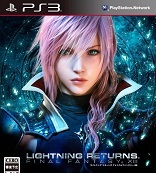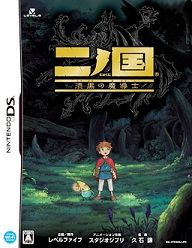Saga Frontier
PlayStation
Reviewed: 07/09/2003
 |
An RPG with a perfect linearity balance is hard to find. Most games on the market are at least somewhat slanted towards the side of over-linearity, while others even go so far as to bring on waves of complaints about the subject. SaGa Frontier is a rare example of a game on the polar opposite end of the spectrum; it may be too non-linear for its own good.
SaGa Frontier‘s non-linearity begins before the game is even really played, as the game features the option to play as any one of seven main characters. All seven have separate, but intertwined stories to tell. No order in which to complete the quests is required or even suggested. The tales can be played through one at a time or all at once, as they all require separate save data. Some of these quests can be finished in 10-15 hours, while a few others will require over 30 hours of play.
 |
| Nice backgrounds |
There is a certain number of scenarios any given character must complete in order to finish the game. What hurts is that the levels of difficulty fluctuate from task to task, and no warnings of such danger appear. So there certainly is a “best” order in which to do things, but the player can often only use trial and error to figure out where he/she is supposed to be. So players will occasionally find themselves wandering into a certain area (for whatever reason), only to be slaughtered by an enemy far more powerful than the party. Luckily, the game allows players to save anywhere, rather than just designated save points or inns. If the player uses this wisely, then the game-overs that come with taking on powerful enemies will not be much of a setback.
The real strength of SaGa Frontier is the battle system. The maximum capacity of the party is 15 characters, which are organized into three groups of five members per group. Any one of the three groups can enter a battle. After starting a fight with an on-screen foe and seeing what must be dealt with, the player decides which battle squad to send in. At that point, the game really takes off. Each party member can be equipped with a variety of weapons and spells, and using them against enemies will assist in the learning of new abilities. For example, heightened use of guns will result in faster learning of special gun attacks. After all of the team’s actions are selected, the fireworks begin. Certain abilities will combine with each other and the attack they form will inflict significantly more damage than its component attacks. Figuring out which moves have a high chance of combining with each other and then watching your team perform the combos is exciting, and the fighting stays fresh throughout all seven quests.
Kenji Ito does a respectable job of composing this game’s music. Most of the tracks fit the feeling of the game rather well, and are good for their respective areas. There’s not quite enough good audio to warrent going out and buying the soundtrack, but the music works for the game. Effectwise, SaGa Frontier’s sound is nothing special, but like the music, most of it fits the game.
 |
| …Bring…it…on… |
The graphics function pretty much the same way as the sound and music. SF certainly didn’t revolutionize the way video games look, but it does have a unique visual style that can be appreciated by those who like a little variety in the appearances of their games. Overall, the eye-friendly backgrounds and deformed characters look good.
All things considered, SaGa Frontier is a solid game that is definitely NOT for everyone. Players looking for an excellent battle system and serious non-linearity may want to check this game out, while those seeking an enthralling story should look elsewhere.
-Heath Hindman
| Score Breakdown | ||
| Overall Very Good Out of 10 See our Review Criteria |
Gameplay | Great |
| Story | Bad | |
| Graphics | Very Good | |
| Sound/Music | Good | |
| Replay Value | Bad | |
| The Verdict: 7 | ||








